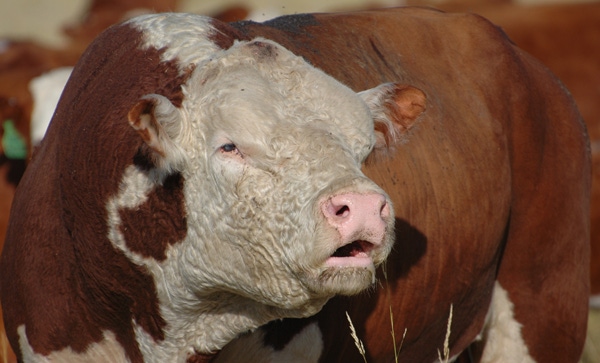Genomics technology is advancing rapidly.

Remember 10 years ago? How you made your bull selection and breeding decisions in 2007 and before? You may have heard of DNA testing and the promise it held for the beef business, but most likely you paged through the sale catalogs looking at the pictures and taking in the EPD and individual performance data for the bulls that caught your eye.
“The last 10 years, really, have been a very exciting time to work in genetics,” says Ben Hayes, a world-renown geneticist with the University of Queensland in Australia. Speaking at the recent convention of the American Angus Association, Hayes says that genetic and genomic technology has progressed to the point that it’s now widely used in breeding decisions. And not just for seedstock producers, but for cow-calf ranchers as well.
“The question is, where do we go next with this technology?” One angle is to add value to breeding decisions, Hayes told Angus breeders. “The second is starting to use genomics as a management tool.”
To illustrate how genomics can be used to add value to breeding decisions, Hayes detailed an experiment in Australia to determine if it’s possible to select cattle for heat tolerance. This is of particular concern in Northern Australia, where heat events are common. It’s also a concern in many parts of the South and Southwestern U.S.
Using Holstein heifers, Hayes and his team combined production data from the Holstein database with weather data generated by the Australian government. Combining these two large data sets, they came up with genomic breeding values for heat tolerance.
Using those data, they screened 400 heifers from random farms and then selected 24 heifers that had the best prediction for heat tolerance and 24 that showed to be the least heat tolerant. These heifers were exposed to a mild heat event for a day. “It turns out the genomic breeding values really did pull apart the two groups quite well,” he says.
In addition, Hayes says breeders can use genomic data to make genomic mating plans that avoid inbreeding. He says that’s important because of the declines in fertility and production that closely-related animals can suffer from. As well, it can help avoid recessive genetic defects, some of which are lethal.
Looking even further down the road, Hayes told Angus breeders that the cost of genomic screening will continue to come down, meaning that genomic data can be used to make management decisions. He used feedlot prescreening as an example.
The idea of genomically screening feeder cattle for various economically important feedyard traits has been around about as long as genomic tests have been available. But cost has been the hurdle. It’s now coming down to a point where it’s almost practical to do, he says.
But genomically testing feeder cattle only gives you a handle on profitability from the animal’s own genome. “And every animal actually carries tens of millions, hundreds of millions if not a billion other genomes. And those are the microbes in the rumen. And they also contribute to feed efficiency and possibly to disease resistance as well.”
Just a few years ago, there was no possibility of getting a handle on the rumen microbiome, he says. But recent developments in sequencing technology developed in human medicine can be transferred to livestock. “It’s now at a point where you can take a handful of rumen contents, extract the DNA out of those rumen contents and profile the rumen of the animals,” he says.
This is an idea that needs a lot of research, but initial trials on a small scale look promising. Hayes and his team ran a small study on 28 dairy heifers where they measured feed efficiency and also profiled the rumen microbiome. “From the rumen microbiome, we were able to predict feed efficiency with an accuracy of 0.49,” he says. “It means we’re getting a fairly good prediction. Certainly not perfect but good, just from the composition of those bugs.”
The feed efficiency genomic breeding value established for dairy cattle is 0.33. “But when you combine them together, at least in this small study, we got an increase in how accurately we could predict feed efficiency,” he says.
“We’re just starting to shift into a space, I think, where the genomic information is going to be useful for management of these animals,” he told Angus breeders. “That’s just starting to happen. The price point needs to come down a little bit to make it a reasonable goer, but certainly the technology is nearly there.”
About the Author(s)
You May Also Like



